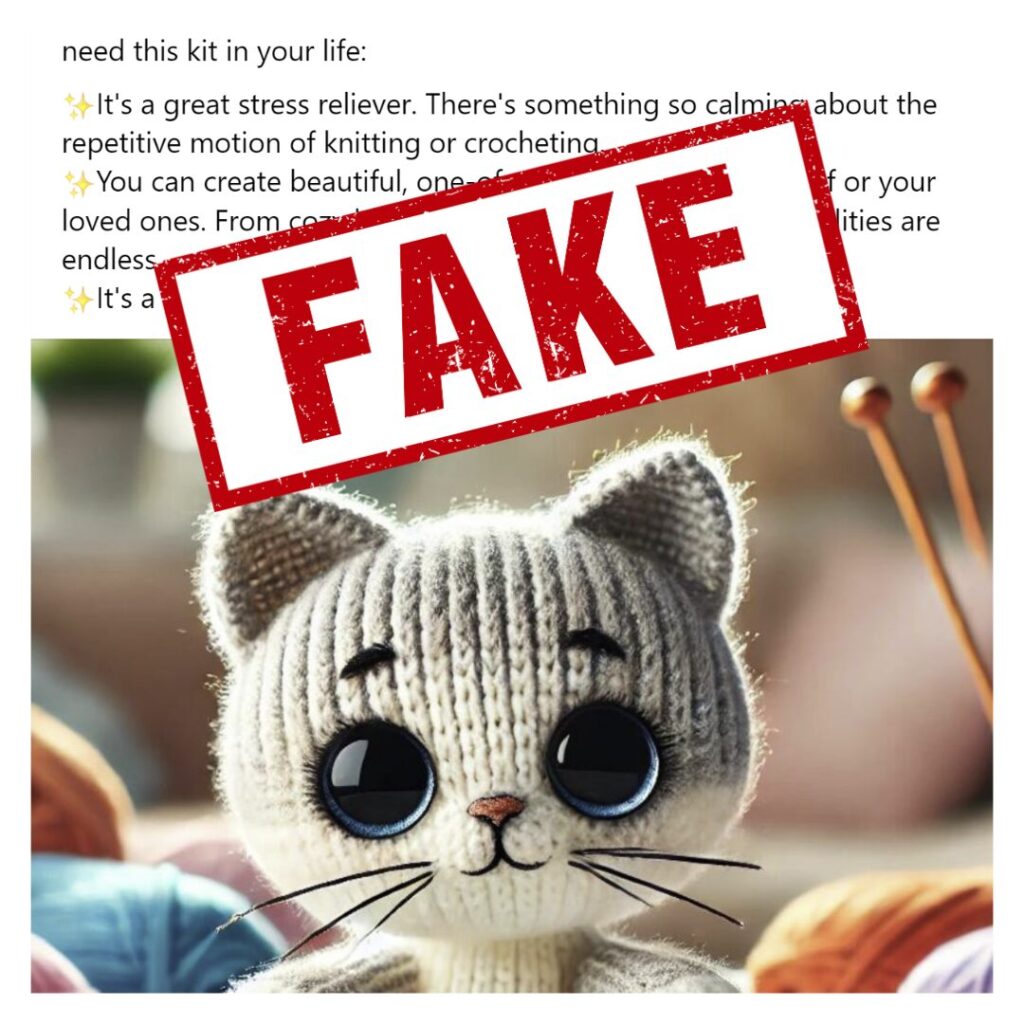Identifying a crochet image generated by artificial intelligence is easy when you know the signs to pay attention to. And you need to learn to do it, because these images will become more and more realistic over time.
Artificial intelligence (AI) has entered our lives in a big way. And, not surprisingly, it’s been used by the ill-intentioned to rip off just about anyone in just about every field. Unfortunately, the world of crochet and textile arts is no exception.
How can we identify an AI-generated image and avoid paying for a product or pattern that certainly won’t live up to our expectations? There are some telltale signs, and I’ve asked my friend ChatGPT to help me explain them to you.

1. Inconsistencies
Yarn texture: AI-generated images can sometimes show yarn textures that don’t match what’s possible when crocheting or knitting. Yarn can appear too smooth, or on the contrary too irregular, without the natural variations found in real creations.
Crochet stitches: Stitches may appear too perfect or irregular in a way that does not correspond to a real technique. For example, stitches may appear disproportionate, misaligned or too well aligned.
2. Structural errors
Proportions and shapes: AI-generated crochet images may have shapes that are not possible or logical. A blanket could have strangely curved edges or patterns that don’t line up properly, for example.
Shadows and lighting: Lighting in generated images can sometimes be inconsistent, with shadows that don’t match the light sources or parts of the project appearing to “float” without a realistic anchor.
3. Lack of fine detail
Loose threads and imperfections: Real crochet images often show small loose threads or natural imperfections, which AI models may omit or generate in an artificial and implausible way.
Tension variations: In a crocheted project, thread tension may vary slightly, but in AI images, this variation may be missing, making the project either too perfect or artificially irregular.
4. Colours and gradients
Unrealistic colours: AI-generated images may feature colour combinations or gradations that are impossible or highly unlikely in the real world. For example, colour transitions that are too smooth.
Colour vibrancy: Images can sometimes have colours that appear too bright or saturated, which may indicate that they have been generated rather than photographed.
5. Lack of coherence
Accessories and tools: Hooks, stitch markers or other crochet tools shown in the image may appear distorted, disproportionate or unnaturally positioned in relation to the project.
Mutant humans: Currently, AI has difficulty generating humans with convincing extremities. The hook or the needles will go through hands with 6 or 7 fingers, the feet will be missing, and so on.
Conclusion
By starting to recognize these signs, you’ll be able to better discern whether a crochet image has been generated by an AI or not, which will help you navigate an increasingly digitalized world. You need to keep a critical eye on everything you see on the Internet before making a purchase (or believing the information shared), as images and texts will become ever more convincing.
Good luck!
Julie xx




